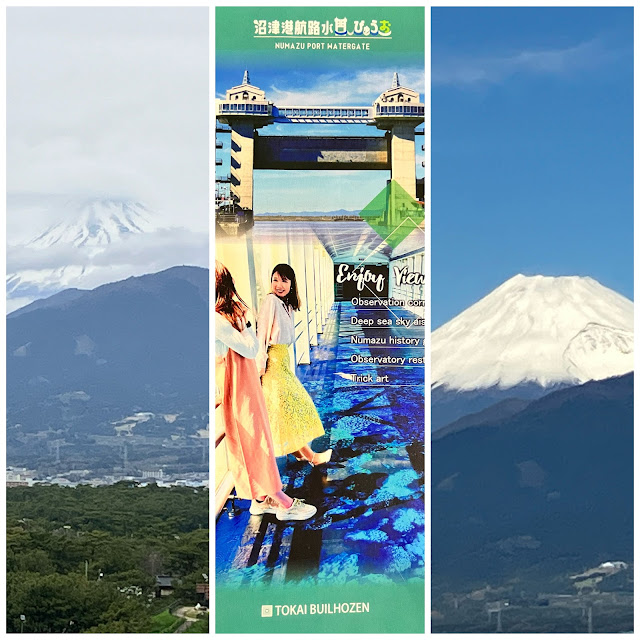.jpg) |
| Skytree and Hozomon Gate, Asakusa |
 |
| The famous Kaminarimon (Thunder Gate) at Senso-ji Temple, Asakusa |
Katsura Sunshine - formerly Gregory Robic - is a Toronto native who was accepted as an apprentice (deshi=弟子) to the rakugo storytelling master Katsura Bunshi VI (then named Katsura Sanshi) in 2008. He became only the second ever Western rakugo-ka in history. The adoption of the master's family name is a rakugo tradition and Sunshine also adopted the first syllable of his master's first name which, accompanied with "shine" created Sunshine (a pun within itself)! Sunshine often talks about how strict the apprenticeship was in his shows and in interviews - he notes, for example that the first thing his master told him was "don't talk"! Indeed, the apprenticeship, three years of going every morning to his master's house and doing mundane household chores as he watched and learned is described on his official homepage as "nearing indentured servitude"! Today, Sunshine performs all over the world in English, including shows in London's West End and on Broadway (he is actually based in New York), though he can also perform in Japanese (the last ten minutes of the show I saw was done in fluent Japanese, with impressive Kansai dialect thrown in for good measure!).
 |
| Suehirotei (末廣亭), the famous vaudeville theater in Shinjuku |
When most Japanese think of rakugo, they probably think of Suehirotei (末廣亭), a famous vaudeville theater in Shinjuku which hosts various comedy events (pictured above). However, the show I went to see was held at a much smaller venue in Asakusa called Mokubatei (木馬亭), a tiny 300-seat theatre which, since it opened in 1970, has been the only traditional rōkyoku theatre in Tokyo. Rōkyoku (浪曲), also called naniwabushi (浪花節),
is a two-person narrative singing/musical storytelling performance characterised by a
long, sad, melancholic story very popular during the first half of the 20th
century. The singer-narrator of naniwabushi is called the rōkyoku-shi, and the shamisen player is known as the kyoku-shi. From Asakusa Station, I walked by the famous Kaminarimon (Thunder Gate) at Senso-ji Temple with its massive 700kg lantern (pictured earlier) and then headed north through the delightful Okuyama Omairimachi (奥山おまいり町) shopping street with its outdoor restaurants (map here) before arriving at the beautiful Mokubatei theatre (pictured below).
Walking onto the stage in his kimono and holding the obligatory folding fan and small towels (all used as props during the performance), Sunshine knelt seiza-style on a zabuton (square Japanese cushion) on a raised platform behind a small wooden desk. The performance starts with a warm-up monologue composed of the storyteller's own material, known as the pillow (makura) since it allows the rakugoka to guage the audience and also readies them for entry into the "dream world" - one of the traditional stories that have been passed down from master to apprentice. In other words, unlike Western comedy, where new, original material and surprise is integral to the act, in rakugo most of the audience have already heard the story and punchline before. Thus, the attraction of rakugo is the unique individual way the performer uses gestures, props, tone, and slight head movements to create the scene and dialogue between different characters. The story I heard was one of the most widely known of the many classical rakugo stories called "Time Noodles" (Toki Soba=時そば), apparently based on a story from a 1726 book - read here for a full English translation! The performance was indeed captivating, particularly the use of the folding fan for chopsticks and the realistic slurping noises to imitate eating noodles (apparently the slurping sound for eating soba - buckwheat noodles - and udon - thicker wheat noodles - is different!).
As part of his show, Sunshine talked about the long Bermuda-shorts style underpants known as suteteko which rakugo performers traditionally wear under their kimonos. In fact, these are not just a dying tradition: fast fashion store Uniqlo introduced a modern roomwear version under the "airism" range which has been a best-seller! Plus ça change...
 |
| Check out Katsura Sunshine's official homepage at www.rakugo.lol (also on Instagram) |
Finally, for those interested in watching more rakugo, the comedy programme Shōten (笑点) is a Sunday evening TV staple (on before Sazae-san!) and also the second longest running variety TV show in Japan. The format is simple - the host poses questions to six storytellers who try to answer in a witty manner: if successful they receive an extra cushion (zabuton) to sit on but if judged unfunny, a cushion is taken away. The sight of a perfomer sitting on a pile - ten is the maximum - is in itself quite funny! For those of you learning Japanese, why not try the phrase, "One zabuton!" (座布団一枚!)to praise someone who has said something particularly amusing? For the rest of you, let me know in the COMMENTS if you have any thoughts on humour - Japanese or otherwise! Which just leaves me to wish you all a very happy new year - or as the Japanese say at this time of year, yoi o toshi o (よいお年を)!
 | |
| Sunday night "Shoten" © Nippon Television Network Corporation (URL here) |












.jpg)
































